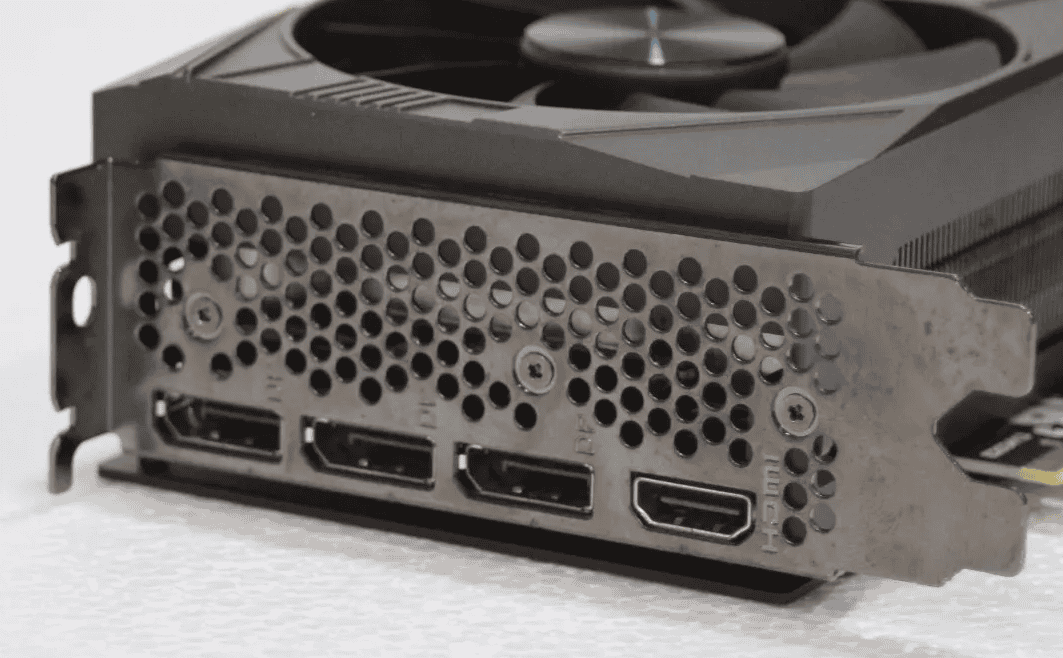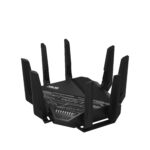The choice between DisplayPort and HDMI can make a real difference in your display setup. DisplayPort 2.0 offers superior bandwidth at 77.37 Gbps compared to HDMI 2.1’s 42.6 Gbps, making it the better choice for high-performance gaming and professional applications.
Both connectors serve different needs. HDMI excels in home entertainment systems and gaming consoles, while DisplayPort shines in professional monitors and high-end gaming PCs. The latest HDMI 2.1b supports 8K at 60Hz and 4K at 120Hz, meeting most users’ current needs.
The decision depends on your equipment and usage. Gaming enthusiasts and professionals working with high-resolution displays benefit from DisplayPort’s higher bandwidth and refresh rates. HDMI remains the standard for TVs and entertainment systems.
Connecting Your Gaming Rig

Understanding DisplayPort
DisplayPort is a digital display interface. It’s often found on newer graphics cards and monitors. A key advantage of DisplayPort is its ability to carry high resolutions and refresh rates. This makes it a popular choice for gamers who want the smoothest and most detailed visuals. DisplayPort also supports multiple displays through a single connection (daisy-chaining). Different versions of DisplayPort exist, each with increasing bandwidth capabilities. For example, DisplayPort 1.4 can handle 8K resolution at 60Hz or 4K resolution at 120Hz with HDR.
Understanding HDMI
HDMI (High-Definition Multimedia Interface) is another common display interface. It’s widely used in TVs, monitors, and gaming consoles. HDMI also carries both video and audio signals. Like DisplayPort, HDMI has different versions, each with improved capabilities. HDMI 2.1, the latest version, supports 8K resolution at 60Hz and 4K resolution at 120Hz, similar to DisplayPort 1.4. However, for gaming monitors specifically, DisplayPort tends to be preferred for the highest refresh rates.
DisplayPort vs. HDMI for Gaming: A Comparison
Choosing between DisplayPort and HDMI for gaming can depend on your specific setup. Here’s a breakdown:
| Feature | DisplayPort | HDMI |
|---|---|---|
| Resolution & Refresh Rate | Generally supports higher refresh rates at higher resolutions | Supports high resolutions and refresh rates, but generally slightly lower than DisplayPort at the very top end |
| Multiple Displays | Supports daisy-chaining multiple monitors | Requires MST hub or other solutions for multiple monitors |
| Audio Support | Supports audio | Supports audio |
| Cable Length | Longer cable lengths can sometimes be problematic at high bandwidths. | Longer cable lengths can sometimes be problematic at high bandwidths. |
| Availability | Common on graphics cards and gaming monitors | Widely available on various devices, including TVs and consoles |
Which is Best for You?
For most PC gamers, especially those with high-end gaming monitors, DisplayPort is generally the recommended choice for optimal performance. It often provides access to the highest refresh rates and resolutions your monitor can support. If you’re connecting a gaming console to a TV, HDMI is typically the standard connection.
Considering Other Factors
Cable quality can impact performance. A poorly made cable, whether DisplayPort or HDMI, can cause signal issues, especially at higher resolutions and refresh rates. Make sure to choose certified cables from reputable brands. Also, check the specifications of your graphics card and monitor to see which ports they offer and what resolutions and refresh rates they support. Sometimes, the choice is made for you if your hardware only has one option.
Future of Display Connections
Both DisplayPort and HDMI continue to evolve, with newer versions offering even higher bandwidth and support for advanced features. It’s likely that both interfaces will remain relevant in the gaming world for the foreseeable future.
USB-C and Thunderbolt: An Increasingly Popular Alternative
While DisplayPort and HDMI are the current standards, USB-C and Thunderbolt are growing in popularity. Many newer devices, especially laptops, include these ports. USB-C and Thunderbolt can carry display signals, often using the DisplayPort Alternate Mode. This means you can connect a monitor to a USB-C or Thunderbolt port using a suitable adapter or cable. Thunderbolt, in particular, offers very high bandwidth, making it a strong contender for future display connections. It’s worth considering these options, especially if your devices support them, as they offer flexibility and convenience. Often, a single USB-C/Thunderbolt port can be used for display output, data transfer, and even charging a device.
Key Takeaways
- DisplayPort offers higher bandwidth and refresh rates for professional and gaming displays
- HDMI provides excellent compatibility across TVs, consoles, and entertainment devices
- Both standards support high resolutions, with DisplayPort leading in maximum performance capabilities
Technical Specifications and Capabilities
HDMI and DisplayPort offer different capabilities in resolution, refresh rates, and bandwidth. The latest versions of both standards provide significant improvements for high-end gaming and professional use.
Resolution and Refresh Rates
DisplayPort 2.0 offers 80 Gbps bandwidth, nearly double HDMI 2.1’s 48 Gbps capability. This higher bandwidth enables superior performance at high resolutions.
DisplayPort 2.0 supports:
- 4K at 240Hz
- 8K at 85Hz
- 10K at 60Hz with DSC compression
HDMI 2.1 supports:
- 4K at 144Hz
- 8K at 60Hz
- 10K at 30Hz
Version Differences and Advances
DisplayPort 1.4 introduced Display Stream Compression (DSC) for higher resolutions without quality loss. The technology maintains full visual quality while reducing bandwidth needs.
- Auto Low Latency Mode (ALLM)
- Quick Frame Transport (QFT)
- Quick Media Switching (QMS)
Each new version brings enhanced HDR support and increased color depth capabilities.
Variable Refresh Rate Technologies
AMD FreeSync and NVIDIA G-Sync prevent screen tearing by synchronizing display refresh rates with GPU frame output.
DisplayPort natively supports both FreeSync and G-Sync through its Adaptive-Sync protocol.
HDMI 2.1 includes built-in VRR support, making it compatible with both FreeSync and G-Sync without needing special hardware.
These technologies work best at high refresh rates between 60Hz and 240Hz for smooth gaming performance.
Practical Considerations in Usage
Selecting between HDMI and DisplayPort requires evaluating device compatibility, performance needs, and specific use cases. Different port configurations and capabilities directly impact display setups and audiovisual performance.
Connectivity Options and Port Availability
Modern graphics cards typically include both HDMI and DisplayPort connections, with DisplayPort using a 20-pin connector and HDMI using a 19-pin design. The DisplayPort connector features a secure latch mechanism, while HDMI relies on friction fit.
Mini DisplayPort and Micro HDMI variants exist for smaller devices. USB-C ports can also carry DisplayPort signals through Alt Mode.
Many monitors offer multiple input options. Gaming monitors typically feature both HDMI 2.1 and DisplayPort 1.4 or newer for maximum flexibility.
Multi-Display and High-Performance Computing
DisplayPort supports Multi-Stream Transport (MST) for daisy-chaining multiple monitors through a single port. This feature enables clean multi-monitor setups without requiring additional graphics card connections.
DisplayPort 2.0 delivers up to 80 Gbps bandwidth, supporting 4K at 240Hz or 8K at 85Hz with Display Stream Compression (DSC).
HDMI 2.1 provides 48 Gbps bandwidth, handling 4K at 120Hz or 8K at 60Hz. This makes it suitable for most gaming and professional applications.
Audiovisual and Compatibility Features
Both standards support HDR content and 10-bit color depth for precise color reproduction. HDMI offers enhanced audio features like eARC for Dolby Atmos and DTS surround sound.
DisplayPort maintains backwards compatibility across versions. Adapters can convert DisplayPort signals to HDMI, DVI, or VGA, but may limit bandwidth and features.
HDMI cables work at longer distances with less signal interference compared to DisplayPort, making them ideal for home theater setups.
Photo editing professionals benefit from DisplayPort’s higher bandwidth for color-critical work at high refresh rates.







